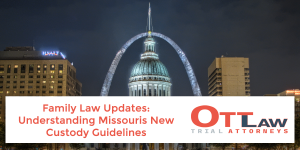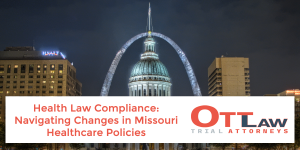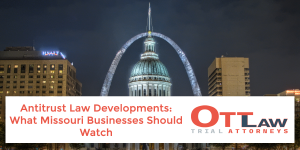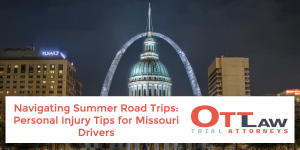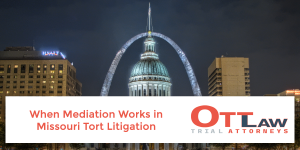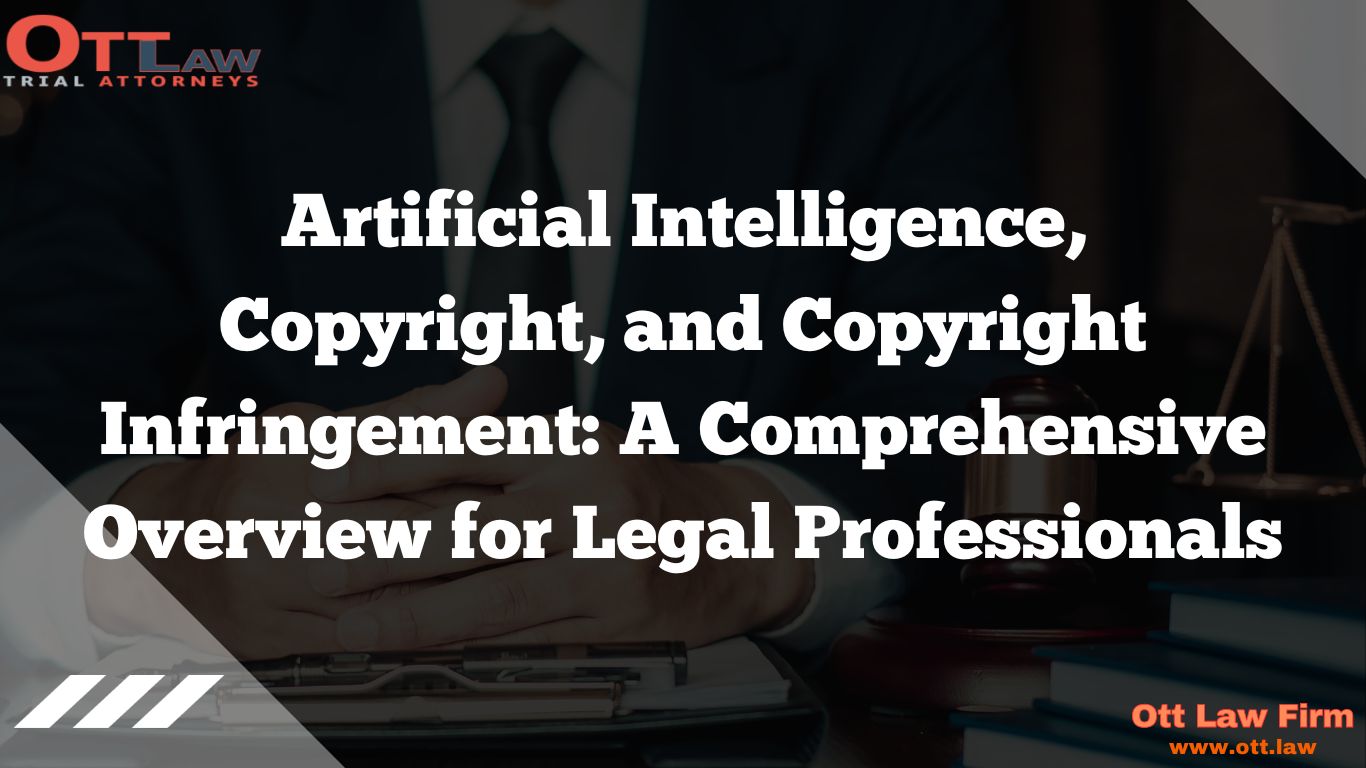The rapid advancement of artificial intelligence (AI) has ushered in a new era of technological capabilities, but it also presents a myriad of legal challenges, particularly in the realm of copyright law. This article delves deep into the intersection of AI and copyright, offering insights for legal professionals navigating this complex landscape.
1. The Nature of AI and Its Capabilities
Modern AI, while impressive, still lacks the free will exhibited by sentient beings in popular culture. For instance, while Bender from the TV show “Futurama” can choose to learn new behaviors, he’s still bound by his programming. Similarly, today’s AI can analyze patterns and produce outputs, but they don’t possess genuine skill or judgment. They operate within predefined parameters and can’t venture beyond their specific domain of intelligence.
2. U.S. Copyright Law and AI
The U.S. Constitution empowers Congress to enact laws promoting the progress of science and the arts. Under Title 17 of the U.S. Code, copyright protection extends to original works of authorship fixed in tangible mediums. This includes literary works, musical compositions, and more. However, it doesn’t protect ideas or processes. The primary goal of copyright law is utilitarian, aiming to encourage the expression of ideas by granting authors exclusive rights over their creations.
3. Copyrightability of AI-Generated Works
For a work to be copyrightable, it must be original, authored, and fixed in a tangible form. While AI can produce works that meet these criteria, the current legal framework only recognizes human authors. A notable case highlighting this is the “monkey selfie copyright dispute,” where a monkey took a selfie using a photographer’s camera. The court ruled that since animals aren’t human, they can’t hold copyrights. By the same logic, AI, not being human or even a legal entity like a corporation, can’t be considered authors for copyright purposes.
4. The Future of Sentient AI and Copyright
The legal landscape remains uncertain regarding how sentient AI might be treated under copyright law. Even if future AI exhibits human-like qualities, current legislation might not grant them copyright protections for their creations.
5. Policy Implications and Considerations
As AI continues to evolve, there’s a pressing need to revisit and possibly reform copyright law. The original intent of copyright—to incentivize human creativity—might not align with a world where AI plays a significant role in content creation. For instance, if an AI tool creates a musical composition, who owns the copyright? The developer of the AI? The user who operated it? Or no one at all?
6. AI as Consumer Products
With AI’s increasing ability to generate content, many companies are selling AI tools directly to consumers. When consumers use these tools to produce new works, questions arise about copyright ownership. Current U.S. laws view products and machines as extensions of their human operators. However, AI challenges this notion, making it difficult to pinpoint liability or ownership.
Conclusion
The rise of AI presents both opportunities and challenges for the legal profession. As AI’s capabilities expand, so too will the legal debates surrounding its role in content creation and copyright ownership. Legal professionals must stay informed and prepared to navigate these uncharted waters, advocating for clear, fair, and forward-thinking policies that address the unique challenges posed by AI.
This blog post is a comprehensive overview of the intricate relationship between AI and copyright law. Legal professionals are encouraged to delve deeper into the provided references and cases to gain a more nuanced understanding of the topic
- (1.) Shlomit Yanisky-Ravid & Luis Antonio Velez-Hernandez, Copyrightability of Artworks Produced by Creative Robots and Originality: The Formality-Objective Model, 19 MINN. J.L. SCI. & TECH. 1, 6 (2018).
- (2.) See Nina I. Brown, Artificial Authors: A Case for Copyright in Computer-Generated Works, 20 COLUM. SCI. & TECH. L. REV. 1, 4 (2018) (“[Advertising agency J. Walter Thompson taught a computer to produce a 3-D printed painting, mimicking the depth and texture of a true painting, in the style of the Dutch master artist Rembrandt van Rijn. The computer-generated image, which looks like it could have been painted by Rembrandt himself. …”).
- (3.) See, e.g., Amy X. Wang, The Musical AI Is Now Working on Its Debut Album(s)–and Wants to Do the Beatles Better than the Beatles, Quartz (Oct. 18, 2016), https://qz.com/812231/ sony-ismaking-an-artificial-intelligence-algorithm-that-writes-perfect-hit-making-songs/ [https://perma.cc/F657-9PKU].
- (4.) See, e.g., Tim Nudd, Inside ‘The Next Rembrandt’: How JWT Got a Computer to Paint like the Old Master, Adweek (June 27, 2016), http://www.adweek.com/brand-marketing/ inside-nextrembrandt-how-jwt-got-computer-paint-ol-master-172257/ [https://perma.cc/C2RM-8FAN].
- (5.) See, e.g., Annalee Newitz, Movie Written by Algorithm Turns Out to Be Hilarious and Intense, ARS TECHNICA (June 9, 2016, 6:30 AM), https://arstechnica.com/gaming/2016/06/ an-aiwrote-this-movie-and-its-strangely-moving/[https://perma.cc/6CTD-B2DM].
- (6.) See, e.g., Matt Reynolds, Neural Network Poetry Is So Bad We Think It’s Written by Humans, NEW SCIENTIST (July 7, 2017), https://www.newscientist.com/article/ 2140014-neural-networkpoetry-is-so-bad-we-think-its-written-by-humans/ [https://perma.cc/K846-GCNR].
- (7.) See, e.g., Ravi Somaiya, The A.P. Plans to Automate Quarterly Earnings Articles, N.Y. Times (June 30, 2014), https://www.nytimes.com/2014/07/01/business/media/ the-ap-plans-forcomputers-to-write-corporate-earnings-news.html [https://perma.cc/K6MQ-TMQ3].
- (8.) Robert C. Denicola, Ex Machina: Copyright Protection for Computer-Generated Works, 69 RUTGERS U.L. REV. 251, 252-53 (2016) (stating that United States copyright law is “woefully, almost willfully” unprepared to address issues of authorship for work created with the assistance of AI); see also Sarit K. Mizrahi, Jack of All Trades, Master of None: Is Copyright Protection Justified for Robotic Faux-Riginality?, WEROBOT 1, 2 (Apr. 2019) (“The increasing development of algorithms that behave unpredictably, in a manner that provides the illusion that robots make choices in their output, has led to the creation of a good deal of machine generated content that appears creative.”).
- (9.) SIMON & GARFUNKEL, THE SOUND OF SILENCE (Columbia Records 1965).
- (10.) Kalin Hristov, Artificial Intelligence and the Copyright Dilemma, 57 IDEA: J. FRANKLIN PIERCE CENTER FOR INTELL. PROP 431, 434 (2017); Denicola, supra note 8, at 253; Ryan Abbott, I Think, Therefore I Invent: Creative Computers and the Future of Patent Law, 57 B.C.L. Rev. 1079, 1079-80 (2016); Brown, supra note 2, at 5-6.
- (11.) Ryan Calo, Artificial Intelligence Policy: A Primer and Roadmap, 51 U.C.D. L. REV. 399, 404 (2017).
- (12.) PAMELA MCCORDUCK, MACHINES WHO THINK: A PERSONAL INQUIRY INTO THE HISTORY AND PROSPECTS OF ARTIFICIAL INTELLIGENCE 246 (2d ed. 2004).
- (13.) Calo, supra note 11, at 404.
- (14.) Id. at 405.
- (15.) Harry Surden, Machine Learning and the Law, 89 WASH. L. REV. 87, 89-95 (2014). Machine learning programmers have based their algorithms off models of the human brain and call these models “neural networks.” Id. A neural network computer program will run through the assigned task and use feedback loops to improve its performance. Id. To create a neural network, programmers will “train” the AI by creating a framework of different algorithms that work together to process data inputs. Id. The AI’s learning starts off very slowly but grows at an exponential rate as it attempts to perform its assigned task over thousands of iterations. Id.
- (16.) McKenzie Raub, Bots, Bias and Big Data: Artificial Intelligence, Algorithmic Bias and Disparate Impact Liability in Hiring Practices, 71 ARK. L. REV. 529, 532 (2018); Curtis E.A. Karnow, The Opinion of Machines, 19 COLUM. SCI. & TECH. L. REV. 136, 143 (2017).
- (17.) Hristov, supra note 10, at 434.
- (18.) Jason Johnson, This Deep Learning AI Generated Thousands of Creepy Cat Pictures, Motherboard, (July 14, 2017) https://motherboard.vice.com/en_us/article/a3dn9j/ this-deeplearning-ai-generated-thousands-of-creepy-cat-pictures [https://perma.cc/W9G2-F6EH].
- (19.) See generally Karnow, supra note 16, at 144 (explaining how AI have been trained to do facial recognition of human faces; the method is basically the same for cat facial detection).
- (20.) Id.
- (21.) Id.; Johnson, supra note 18.
- (22.) John R. Smith, IBM Research Takes Watson to Hollywood with the First “Cognitive Movie Trailer”, THINK BLOG (Aug. 31, 2016), https://www.ibm.com/blogs/think/2016/08/cognitive-movietrailer [https://perma.cc/YG5K-4HY8]; see 20th Century Fox, Morgan | IBM Creates First Movie Trailer by AI [HD] | 20th Century FOX, YouTube (Aug. 31, 2016), https://www.youtube.com/watch?v=gJEzuYynaiw [https://perma.cc/CA5B-FXHF] (discussing how 20th Century Fox asked IBM to use Watson to create a movie trailer for the film Morgan: Watson was trained by “watching” hundreds of hours of footage and given labels on what specific scenes were with tags for “scary, tender, eerie”); see, e.g., WashPostPR, The Washington Post Leverages Automated Storytelling to Cover High School Football, WashPost PR Blog, (Sept, 1, 2017), https://www.washingtonpost.com/pr/wp/2017/09/01/the-washington-post-leverages-heliograf-tocover-high-school-football/ ?noredirect=on&utm_term=.f8893e4fb06f [https://perma.cc/D9JWYQZ4] (stating that The Washington Post has already used its own in-house AI, Heliograph, to automate local high school football games).
- (23.) Jade Boyd-Rice, NEW A.I. APPLICATION CAN WRITE ITS OWN CODE, Futurity, (Apr. 25, 2018), https://www.futurity.org/artificial-intelligence-bayou-coding-1740702 [https://perma.cc/F9GJ-VKXK].
- (24.) 2001: A Space Odyssey (Metro-Goldwyn-Mayer 1968) (HAL 9000, the ship’s computer); THE TERMINATOR (Hemdale Film Corp. 1984), TERMINATOR 2: JUDGMENT DAY (TriStar Pictures 1991), and TERMINATOR 3: RISE OF THE MACHINES (Warner Bros. Pictures 2003) (Skynet, computer system); Futurama (20th Century Fox Television 1999-2013) (Bender the robot); BLADE RUNNER (Warner Bros. 1982) (Nexus-6 replicants).
- (25.) See Sentience, MERRIAM-WEBSTER, http://www.merriamwebster.com/dictionary/sentience [https://perma.cc/UCH8-XB9G] (last visited Jan. 28, 2019).
- (26.) See generally id.
- (27.) Free Will Hunting, FUTURAMA WIKI, https://futurama.fandom.com/wiki/Free_Will_Hunting [https://perma.cc/QBV3-VGA9] (last visited Jan. 28, 2019).
- (28.) Lawrence B. Solum, Legal Personhood for Artificial Intelligences, 70 N.C. L. REV. 1231, 1272 (1992).
- (29.) See Solum, supra note 28, at 1272-73; see also Arie A. Covrigaru & Robert K. Lindsay, Deterministic Autonomous Systems, AI MAG., Fall 1991, at 110, 111-13 (arguing that “an entity is autonomous if it is perceived to have goals, including certain kinds of goals, and is able to select among a variety of goals that it is attempting to achieve”).
- (30.) Mizrahi, supra note 8, at 8.
- (31.) Id.
- (32.) See Michelle Sellwood, The Road to Autonomy, 54 SAN DIEGO L. REV. 829, 834 (2017).
- (33.) See Peter Stone et al., Artificial Intelligence and Life in 2030: Report of the 2015 Study Panel 50 (Sept. 2016), https://ai100.stanford.edu/sites/g/files/sbiybj9861/f/ai_100_report_0831fnl.pdf [https://perma.cc/Z7SU-W6NR].
- (34.) See Denicola, supra note 8, at 264.
- (35.) U.S. Const. art. I, [section] 8, cl. 8.
- (36.) 17 U.S.C. [section] 102(a) (2018).
- (37.) Id. [section] 106.
- (38.) Id. [section] 102(a).
- (39.) Id. [section] 102(b); Feist Publ’ns, Inc. v. Rural Tel. Serv. Co., Inc., 499 U.S. 340, 364 (1991).
- (40.) Baker v. Selden, 101 U.S. 99, 105-07 (1879).
- (41.) MARK A. LEMLEY ET AL., INTELLECTUAL PROPERTY IN THE NEW TECHNOLOGICAL AGE: 2018, at 499 (2018).
- (42.) See Feist Publ’ns, Inc., 499 U.S. at 355.
- (43.) U.S. CONST. art. I, [section] 8, cl. 8.
- (44.) LEMLEY ET AL., supra note 41, at 494.
- (45.) 17 U.S.C [section][section] 302(a), 302(c) (2018).
- (46.) See U.S. Const. art. I, [section] 8, cl. 8; Baker v. Selden, 101 U.S. 99, 105 (1879) (explaining that “the title of the act of Congress is, ‘for the encouragement of learning,’ and was not intended for the encouragement of mere industry, unconnected with learning and the sciences”).
- (47.) STEPHAN M. MCJOHN, EXAMPLES & EXPLANATIONS: INTELLECTUAL PROPERTY 14 (5th ed. 2015).
- (48.) 17 U.S.C. [section] 102(b); see Feist Publ’ns, Inc. v. Rural Tel. Serv. Co., Inc., 499 U.S. 340, 355 (1991).
- (49.) See Feist Publ’ns, Inc., 499 U.S. at 358.
- (50.) See id. at 345.
- (51.) Id.
- (52.) Id. at 362.
- (53.) See id. at 358.
- (54.) Id.
- (55.) Id. at 379.
- (56.) Id. at 361-62.
- (57.) Matthew Bender & Co., Inc. v. W. Pub. Co., 158 F.3d 693, 699 (2d Cir. 1998).
- (58.) MCJOHN, supra note 47, at 22.
- (59.) 17 U.S.C. [section] 101 (2018).
- (60.) H.R. REP. No. 94-1476, at 52-53 (1976); LEMLEY ET AL., supra note 41, at 515.
- (61.) See Burrow-Giles Lithographic Co. v. Sarony, 111 U.S. 53, 60-61 (1884).
- (62.) See Tandy Corp. v. Personal Micro Computers, Inc., 524 F. Supp. 171 (N.D. Cal. 1981).
- (63.) But see Garrett Huson, I, Copyright, 35 SANTA CLARA HIGH TECH. L.J. 54, 77 (2018) (saying that because a human does not fix the work of an AI onto a tangible medium, the AI’s work automatically fails to create ownership rights).
- (64.) Burrow-Giles Lithographic Co., 111 U.S. at 55; see 17 U.S.C. [section] 101 (2018).
- (65.) Compendium of U.S. Copyright Office Practices, UNITED STATES COPYRIGHT OFFICE 4, https://www.copyright.gov/comp3/chap300/ch300-copyrightable-authorship.pdf [https://perma.cc/L2D4-49U6] (last visited Jan. 29, 2019); see Naruto v. Slater, 888 F.3d 418, 422 (9th Cir. 2018).
- (66.) See Susannah Cullinane, Monkey Does Not Own Selfie Copyright, Appeals Court Rules, CNN (Apr. 24, 2018), https://www.cnn.com/2018/04/24/us/monkey-selfie-peta-appeal/index.html [https://perma.cc/H6A3-89X6].
- (67.) Naruto, 888 F.3d at 422.
- (68.) Id.
- (69.) Id. at 420 (quoting DAVID J. SLATER, WILDLIFE PERSONALITIES (2014)) (internal quotation marks omitted).
- (70.) Id.
- (71.) See id.
- (72.) Compendium of U.S. Copyright Office Practices, supra note 65, at 4.
- (73.) Bendin’ in the Wind, FUTURAMA WIKI, https://futurama.fandom.com/wiki/Bendin%27_in_the_Wind [https://perma.cc/8R9M-6V25] (last visited Jan. 28, 2019).
- (74.) Compendium of U.S. Copyright Office Practices, supra note 65, at 4.
- (75.) 17 U.S.C. [section] 501(a) (2018).
- (76.) Arnstein v. Porter, 154 F.2d 464, 468 (2d Cir. 1946).
- (77.) Rentmeester v. Nike, Inc. 883 F.3d 1111, 1117 (9th Cir. 2018).
- (78.) Copyright Office Fees, United States Copyright Office 7, https://www.copyright.gov/circs/circ04.pdf [https://perma.cc/KV57-EYTS] (last visited Jan. 29, 2019).
- (79.) 17 U.S.C. [section][section] 502-505 (2018).
- (80.) Id. [section] 506.
- (81.) Id. [section][section] 107-112.
- (82.) Id. [section] 107.
- (83.) Id. [section] 501.
- (84.) RESTATEMENT (THIRD) OF AGENCY [section] 1.01 (AM. LAW INST. 2006).
- (85.) Id. [section] 2.02.
- (86.) Id. [section] 2.02-2.03.
- (87.) Id. [section] 7.03(1)(a).
- (88.) See Reading v. Regem, 2 KB 268 (1948).
- (89.) Id.
- (90.) RESTATEMENT (THIRD) OF AGENCY [section] 2.02; see Creative Non-Violence v. Reid, 490 U.S. 730, 739-41 (1989); Humble Oil & Ref. Co. v. Martin, 222 S.W.2d 995, 997-98 (Tex. 1949).
- (91.) See CAL. CORP. CODE [section] 1505 (West 2019); HAW. REV. STAT. ANN. [section] 414-61 (West 2019); VA. CODE ANN. [section] 13.1-634 (West 2019).
- (92.) CAL. CORP. CODE [section] 1505.
- (93.) HAW. REV. STAT. ANN. [section] 414-61.
- (94.) Surden, supra note 15, at 90-92.
- (95.) See id.
- (96.) See id.
- (97.) Scott Pelley, Facial and Emotional Recognition; How One Man is Advancing Artificial Intelligence, 60 MINUTES (Jan. 13, 2019), https://www.cbsnews.com/news/ 60-minutes-ai-facial-andemotional-recognition-how-one-man-is-advancing-artificial-intelligence [https://perma.cc/4BEHWQL2]; Dan Robitzski, FORMER GOOGLE EXEC: AI WILL REPLACE 40 PERCENT OF JOBS IN 15 YEARS, FUTURISM (Jan. 10, 2019), https://futurism.com/the-byte/google-ai-jobs [https://perma.cc/2NDR-P89M].
- (98.) Rebecca J. Rosen, In Praise of Short-Term Thinking, THE ATLANTIC (Sept. 3, 2015), https://www.theatlantic.com/business/archive/2015/09/jobs-automation-technologicalunemployment-history/403576 [https://perma.cc/Z58D-UHR3].
- (99.) See Lola Fadulu, The New Casualties of Automation, THE ATLANTIC (Dec. 21, 2017), https://www.theatlantic.com/education/archive/2017/12/the-new-casualties-of-automation/548948 [https://perma.cc/GNK4-TL73].
- (100.) Xavier Oberson, Taxing Robots? From the Emergence of an Electronic Ability to Pay to a Tax on Robots or the Use of Robots, WORLD TAX JOURNAL, May 2017, at 247.
- (101.) Chris Weller, Elon Musk Doubles Down on Universal Basic Income: ‘It’s Going to be Necessary’, BUSINESS INSIDER (Feb. 13, 2017, 12:53 PM), https://www.businessinsider.com/elonmusk-universal-basic-income-2017-2 [https://perma.cc/UR3X-WP93].
- (102.) See Report with Recommendations to the Commission on Civil Law Rules on Robotics (2015/2103 (INL)), at introduction K, A8-0005/2017 (Jan, 27, 2017), http://www.europarl.europa.eu/doceo/document/A-8-2017-0005_EN.pdf [https://perma.cc/8U9EG3NN].
- (103.) Id.
- (104.) Janosch Delcker, Europe Divided Over Robot ‘Personhood’, POLITICO (Apr. 11, 2018, 12:45 PM), https://www.politico.eu/article/europe-divided-over-robot-ai-artificial-intelligencepersonhood [https://perma.cc/BSN2-KT46].
- (105.) See generally 17 U.S.C. [section] 101 (2018).
- (106.) See Sega Enterprises Ltd. v. Accolade, Inc., 977 F.2d 1510, 1518 (9th Cir. 1992), as amended (Jan. 6, 1993) (holding that intermediate copying of computer object code may infringe exclusive rights granted to copyright owner to reproduce work); see generally Karnow, supra note 16, at 143-44.
- (107.) Jan L. Nussbaum, Apple Computer, Inc. v. Franklin Computer Corporation Puts the Byte Back into Copyright Protection for Computer Programs, 14 GOLDEN GATE U. L. REV. 281, 281-83 (1984); LEMLEY, MENELL ET AL., SOFTWARE AND INTERNET LAW 34-35 (2011); 17 U.S.C. [section][section] 101, 117 (2018).
- (108.) See, e.g., RobotCatArt, Is it CHEATING to Let an AI Color Your Art?, DEVIANT ART (Jan. 27, 2017, 8:50 PM), https://www.deviantart.com/robotcatart/journal/Is-it-CHEATING-to-let-an-AIcolor-your-art-660045105 [https://perma.cc/4D49-4M7N].
- (109.) See, e.g., William Hughs, Teen Builds Rapping AI Patterned After Kanye Lyrics, AV NEWS (Mar. 17, 2017, 2:05 PM), https://news.avclub.com/teen-builds-rapping-ai-patterned-afterkanye-lyrics-1798259588 [https://perma.cc/Q3HH-38C6].
- (110.) See, e.g., Madhu v. Swamy, How Artificial Intelligence is Emerging in Writing Industry?, CUSTOMER THINK (May 28, 2018), http://customerthink.com/how-artificial-intelligence-is-emergingin-writing-industry [https://perma.cc/ZB3G-5QKJ].
- (111.) See 17 U.S.C. [section] 101 (2018); Naruto v. Slater, 888 F.3d 418, 422 (9th Cir. 2018).
- (112.) See Sellwood, supra note 32, at 848-50 (2017); David C. Vladeck, Machines Without Principals: Liability Rules and Artificial Intelligence, 89 Wash. L. Rev. 117, 127-30 (2014); Ana Ramalho, Will Robots Rule the (Artistic) World?: A Proposed Model for the Legal Status of Creations by Artificial Intelligence Systems, 21 JINTLAW 1, 10 (2017) (“If there is enough of a human input in creating an original work, then copyright protection will be available at least for the human-created part of the work (even though, admittedly, there may be cases where human and machine contributions are not easy to separate or evaluate).”).
- (113.) Bridget Watson, A Mind of Its Own-Direct Infringement by Users of Artificial Intelligence Systems, 58 IDEA: J. FRANKLIN PIERCE CENTER FOR INTELL. PROP 65, 81 (2017).
- (114.) Creative Non-Violence v. Reid, 490 U.S. 730, 739-40 (1989).
- (115.) See 17 U.S.C. [section] 101 (2018).
- (116.) U.S. Auto Parts Network, Inc. v. Parts Geek, LLC, 692 F.3d 1009, 1015 (quoting Avtec Sys., Inc. v. Peiffer, 21 F.3d 568, 571 (4th Cir. 1994)) (internal quotation marks omitted).
- (117.) Huson, supra note 63, at 72-73 (“If the programmer is considered to ‘own’ the work that was not ‘authored’ by her/him, then the work could be considered a ‘work made for hire’ under the [Copyright] Act….”).
- (118.) Lewis v. Activision Blizzard, Inc., 634 Fed. Appx. 182, 184-85 (9th Cir. 2015).
- (119.) See id. at 185; 17 U.S.C. [section] 101 (2018).
- (120.) Lewis, 634 Fed. Appx. at 184.
- (121.) Id.
- (122.) Ramalho, supra note 107, at 18 (“It is the aspect of controlling the production of the work (be it through an employment link or in certain cases of commissioned works) that affords the status of ‘author’ to an employer or a commissioning party; in other words, where the creator is a mere agent of someone else, the latter should be given authorship.”).
- (123.) RESTATEMENT (THIRD) OF AGENCY [section] 2.04 (Am. Law Inst. 2006) (“An employer is subject to liability for torts committed by employees while acting within the scope of their employment.”).
- (124.) Fonovisa, Inc. v. Cherry Auction, Inc., 76 F.3d 259, 262 (9th Cir. 1996) (“In the other line of cases, the so-called ‘dance hall cases,’ the operator of an entertainment venue was held liable for infringing performances when the operator (1) could control the premises and (2) obtained a direct financial benefit from the audience, who paid to enjoy the infringing performance.”).
- (125.) See Timothy Butler, Can a Computer be an Author? Copyright Aspects of Artificial Intelligence, 4 HASTINGS COMM. & ENT. L.J. 707, 712 (1981) (“[A programmer’s] job will be to accurately inform the computer of the problem, wait for the computer to generate the program and then modify it to suit the particular application.”).
- (126.) See, e.g., Deutsch v. Arnold, 98 F.2d 686 (2d Cir. 1938) (holding that a landlord who lacked knowledge of the infringing acts of its tenant and who exercised no control over the leased premises was not liable for infringing sales by its tenant).
- (127.) Dreamland Ball Room v. Shapiro, Bernstein & Co., 36 F.2d 354, 355 (7th Cir. 1929).
- (128.) Id.
- (129.) See id.
- (130.) M. Witmark & Sons v. Calloway, 22 F.2d 412, 415 (E.D. Tenn. 1927).
- (131.) Id. at 414-15.
- (132.) Shapiro, Bernstein and Co. v. H.L. Green Co., 316 F.2d 304 (2d Cir. 1963).
- (133.) Id.; Fonovisa, Inc. v. Cherry Auction, Inc., 76 F.3d 259, 262 (9th Cir. 1996).
- (134.) Dr. Seuss Enterprises, L.P. v. Penguin Books USA, Inc., 109 F.3d 1394, 1396-97 (9th Cir. 1997).
- (135.) Id. at 1397. This hypothetical is loosely based off of case where defendant attempts to claim parody fair use defense where they used illustration designs from Dr. Seuss’ The Cat in the Hat but about the OJ Simpson alleged murder. Id. at 1396.
- (136.) See RESTATEMENT (SECOND) OF AGENCY [section] 219 (AM. LAW INST. 1958).
- (137.) Sellwood, supra note 32, at 842; see RESTATEMENT (THIRD) OF TORTS: LIAB. FOR PHYSICAL & EMOTIONAL HARM [section] 3 (AM. LAW INST. 2010) (“[N]egligence is a failure to do what the reasonable person would do ‘under the same or similar circumstances.'”).
- (138.) See Barb Renner et al., The Adoption of Disruptive Technologies in the Consumer Products Industry, DELOITTE, https://www2.deloitte.com/content/dam/Deloitte/ec/Documents/consumer-business/ DI_Disruptivetechnologies-digital-reality%20(1).pdf [https://perma.cc/VBK2-LJM7] (last visited Jan. 14, 2020).
- (139.) 15 U.S.C. [section] 2052 (2018).
- (140.) See id. [section] 2052(5)(A).
- (141.) See RESTATEMENT (SECOND) OF AGENCY [section][section] 219, 228 (AM. LAW INST. 1958); RESTATEMENT (THIRD) OF AGENCY [section] 1.02 (AM. LAW INST. 2006).
- (142.) Huson, supra note 63, at 72-74.
- (143.) ORB COMPOSER, https://www.orb-composer.com/features/introduction [https://perma.cc/LS2C-TTZR] (last visited Feb. 14, 2019).
- (144.) See id.
- (145.) AUTOMATED Insights, https://automatedinsights.com [https://perma.cc/NCT2-EN3T] (last visited Feb. 14, 2019).
- (146.) See ORB COMPOSER, supra note 135; AUTOMATED INSIGHTS, supra note 137.
- (147.) A. Michael Froomkin, Introduction in ROBOT LAW x, xiv (Ryan Calo et al. eds., 2016).
- (148.) See James M. Anderson et al., Autonomous Vehicle Technology: A Guide for Policymakers, RAND CORP. 115-16 (2016), http://www.rand.org/content/dam/rand/pubs/research_reports/RR400/RR443-2/RAND_RR443-2.pdf [https://perma.cc/SY3H-TTCH]
- (149.) See id. at 145.
- (150.) Id.
- (151.) Sellwood, supra note 32, at 844-47.
- (152.) RESTATEMENT (THIRD) OF TORTS: PRODS. LIAB. [section] 2 (AM. LAW INST. 1998); Escola v. Coca Cola Bottling Co., 150 P.2d 436, 440-41 (Cal. 1944).
- (153.) Sony Corp. of Am. v. Universal City Studios, Inc., 464 U.S. 417, 422-23 (1984).
- (154.) Id.
- (155.) Id. at 440.
- (156.) Id. at 442.
- (157.) See Metro-Goldwyn-Mayer Studios Inc. v. Grokster, Ltd., 545 U.S. 913, 933 (2005).
- (158.) See id. at 959 (Breyer, J., concurring) (stating that to hold defendants liable for any and all technology that can be used for copyright infringement would be costly and would hinder the development of new technology).
- (159.) Paintschainer, https://paintschainer.preferred.tech/webui/howto [https://perma.cc/A2QL-SS37] (last visited Feb. 15, 2019); see Darrell Etherington, This Neural Network-Based Software Will Automatically Color in Your Line Art, TECHCRUNCH, (Feb. 2, 2017), https://techcrunch.com/2017/02/02/this-neural-network-based-software-will-automatically-color-inyour-line-art [https://perma.cc/H3MC-C8EC].
- (160.) Etherington, supra note 159.
- (161.) See SCHEME COLOR, https://www.schemecolor.com/pikachu.php [https://perma.cc/J8AC-3CWX] (last visited Feb. 15, 2019) (identifying the five colors in the Pikachu (Pokemon) palette: Jonquil (#FAD61D), Carrot Orange (#E19720), Red (RYB) (#F62D14), Kenyan Copper (#811E09), and Black (#000000).); Pikachu, POKEMON, https://www.pokemon.com/us/pokedex/pikachu [https://perma.cc/3DHC-655H] (last visited Feb. 15, 2019).
- (162.) 17 U.S.C. [section] 107 (2018).
- (163.) Id. [section] 106.
- (164.) Paints Chainer, supra note 159.
- (165.) Id.
- (166.) Metro-Goldwyn-Mayer Studios Inc. v. Grokster, Ltd., 545 U.S. 913, 919 (2005) (“[O]ne who distributes a device with the object of promoting its use to infringe copyright, as shown by clear expression or other affirmative steps taken to foster infringement, is liable for the resulting acts of infringement by third parties.”).
- (167.) Id. at 939-40.
- (168.) Id. at 924-25.
- (169.) See id. at 936-37.
- (170.) See id.
- (171.) See id.
- (172.) Id. at 924-25.
- (173.) Id.
- (174.) RESTATEMENT (THIRD) OF TORTS: PRODS. LIAB. [section] 2 (AM. LAW INST. 1998); see, e.g., Watson v. Ford Motor Co., 699 S.E.2d 169, 174 (S.C. 2010).
- (175.) Restatement (Third) of Torts: Prods. Liab. [section] 2(a) (“[A product] contains a manufacturing defect when the product departs from its intended design even though all possible care was exercised in the preparation and marketing of the product[.]”).
- (176.) Id. [section] 2(b) (“[A product] is defective … when the foreseeable risks of harm posed by the product could have been reduced or avoided by the adoption of a reasonable alternative design … and the omission of the alternative design renders the product not reasonably safe[.]”).
- (177.) Id. [section] 2(c) (“[A product] is defective … when the foreseeable risks of harm posed by the product could have been reduced or avoided by the provision of reasonable instructions or warnings … and the omission of the instructions or warnings renders the product not reasonably safe.”).
- (178.) Surden, supra note 15, at 93.
- (179.) Ryan Calo, Robotics and the New Cyberlaw, 103 CAL. L. REV. 513, 536 (2015) (“The code conveyed to the consumer fails to be defective for purposes of a product liability claim not because it lacks defects, but for the antecedent reason that it is not even a product.”); Jeffrey K. Gurney, Sue My Car Not Me: Products Liability and Accidents Involving Autonomous Vehicles, 13 U. Ill. J.L. TECH. & POL’Y 247, 259 (2013) (“[C]ourts have not applied the manufacturing defect doctrine to software because nothing tangible is manufactured.”).
- (180.) See, e.g., Escola v. Coca Cola Bottling Co. of Fresno, 150 P.2d 436, 440 (Cal. 1944).
- (181.) See Sellwood, supra note 32, at 856-57 (arguing that if autonomous vehicle is defective, then the normal rules of products liability should apply).
- (182.) See Feist Publ’ns, Inc. v. Rural Tel. Serv. Co., Inc., 499 U.S. 340, 345 (1991).
- (183.) Compendium of U.S. Copyright Office Practices, supra note 65, at 5.
- (184.) Bridgeman Art Library, Ltd. v. Corel Corp., 36 F. Supp. 2d 191 195 (S.D.N.Y. 1999).
- (185.) Compendium of U.S. Copyright Office Practices, supra note 65, at 21-22.
- (186.) See Surden, supra note 15, at 93-94.
- (187.) See id.
- (188.) 17 U.S.C. [section] 102(b) (2018); Baker v. Selden, 101 U.S. 99, 105-07 (1879).
- (189.) 17 U.S.C. [section] 102(b); Baker, 101 U.S. at 105-07.
- (190.) Dimmie v. Carey, 88 F. Supp. 2d 142, 143 (S.D.N.Y. 2000) (dismissing a copyright infringement suit alleging that Mariah Carey’s Hero was copied from song entitled Be Your Own Hero, holding that plaintiff did not prove access or striking similarity, and finding that Carey proved independent creation).
- (191.) Copyright Infringement Suit Alleging that Mariah Carey’s “Hero” was Copied from Song Entitled “Be Your Own Hero ” is Dismissed; Court Rules that Plaintiff Did Not Prove Access or Striking Similarity, and Finds that Carey Provided Independent Creation, 22 Ent. L. Rep. (Aug. 2000); see Dimmie, 88 F. Supp. 2d at 143.
- (192.) Copyright Infringement Suit Alleging that Mariah Carey’s “Hero” was Copied from Song Entitled “Be Your Own Hero” is Dismissed; Court Rules that Plaintiff Did Not Prove Access or Striking Similarity, and Finds that Carey Provided Independent Creation, supra note 191; see Dimmie, 88 F. Supp. 2d at 143.
- (193.) See Sellwood, supra note 32; Roger Michalski, How to Sue A Robot, 2018 UTAH L. REV. 1021, 1055-56 (2018) (“Another model is to treat robots like corporations. Like robots, corporations are inherently human owned (directly or indirectly), controlled by humans, and can exist for a broad spectrum of purposes.”).
- (194.) Robert D. Hart, Saudi Arabia’s Robot Citizen is Eroding Human Rights, (Feb. 14, 2018) https://qz.com/1205017/saudi-arabias-robot-citizen-is-eroding-human-rights [https://perma.cc/7YX5RLQE].
- (195.) See generally Corporation, THE LAW DICTIONARY, https://thelawdictionary.org/corporation [https://perma.cc/H5AA-V6Q8] (last visited Feb. 16, 2019).
- (196.) See id. (stating that a corporation is given the same rights as human individuals like buying and selling property).
- (197.) Lawrence B. Solum, Legal Personhood for Artificial Intelligences, 70 N.C.L. REV. 1231, 1259 (1992).
- (198.) See Naruto v. Slater, 888 F.3d 418, 422 (9th Cir. 2018).
- (199.) Compendium of U.S. Copyright Office Practices, supra note 65, at 4.
- (200.) Id. at 32; Compendium Glossary, UNITED STATES COPYRIGHT OFFICE, https://copyright.gov/comp3/docs/glossary.pdf [https://perma.cc/VE34-J7LH] (last visited Jan. 29, 2019).
- (201.) Huson, supra note 63, at 77 (saying works falling into the public domain provides the best solution to the problem to AI copyright ownership); Ralph D. Clifford, Intellectual Property in the Era of the Creative Computer Program: Will the True Creator Please Stand Up?, 71 Tul. L. Rev. 1675, 1681, 1702-03 (1997) (arguing the output of creative computers cannot and should not be protected by federal intellectual property laws and that such results enter the public domain).
- (202.) Brown, supra note 2, at 5.
- (203.) Id. (saying that without proper copyright protection, “innovators may eventually shy away from investing their time and effort in this field”).
- (204.) Steve Schlackman, Who Holds the Copyright in AI Created Art?, ART LAW JOURNAL (Apr. 22, 2018), http://alj .orangenius.com/the-next-rembrandt-who-holds-the-copyright-in-computergenerated-art [https://perma.cc/D26M-WB3N].
- (205.) Darrell Etherington, Watch Mark Zuckerberg’s Morgan Freeman-Voiced Jarvis AI in Action, TECHCRUNCH, (Dec. 20, 2016) https://techcrunch.com/2016/12/20/watch-mark-zuckerbergsmorgan-freeman-voiced- jarvis-ai-in-action [https://perma.cc/MX3C-PUNH]; CNN Business, Mark Zuckerberg’s Awkward Afternoon with Morgan Freeman, YouTube (Dec. 20, 2016), https://www.youtube.com/watch?v=ZGLPxEv_EWo [https://perma.cc/6G3Z-28GF].
- (206.) Amazon Echo & AlexaDevices, Amazon, https://www.amazon.com/ Amazon-Echo-AndAlexa-Devices/b?ie=UTF8&node=9818047011g [https://perma.cc/2TRC-UNSG] (last visited Jan. 30, 2019).
- (207.) Etherington, supra note 205; CNN Business, supra note 205.
- (208.) Etherington, supra note 205; CNN Business, supra note 205.
- (209.) See Eastwood v. Superior Court, 149 Cal. App. 3d 409, 417, 198 Cal. Rptr. 342, 347 (1983) (holding that in order to have a valid right of privacy injury, plaintiff must prove: “(1) the defendant’s use of the plaintiff’s identity; (2) the appropriation of plaintiff’s name or likeness to defendant’s advantage, commercially or otherwise; (3) lack of consent; and (4) resulting injury”).
- (210.) Midler v. Ford Motor Co., 849 F.2d 460, 462 (9th Cir. 1988) (holding that “[a] voice is not copyrightable because the sounds are not ‘fixed'”).
- (211.) See id.
- (212.) See id.
- (213.) Waits. v. Frito-Lay 978 F.2d 1093, 1096 (1992).
- (214.) Id. at 1100.
- (215.) Sinatra v. Goodyear Tire & Rubber Co., 435 F.2d 711 (9th Cir. 1970).
- (216.) Id. at 716.
- (217.) Id.
- (218.) Laws v. Sony Music Entm’t, Inc., 448 F.3d 1134, 1135-36 (9th Cir. 2006).
- (219.) Id. at 1144.
- (220.) See Sophie Curtis, Deep Listening: The Neural Network Learning to Hear You in a Crowd, BigData, (Sep. 25, 2017) https://bigdata-madesimple.com/ deep-listening-the-neural-networklearning-to-hear-you-in-a-crowd [https://perma.cc/9Y4Y-SUFT] (saying that AI can pick up the voice of a single individual in a crowd; similar to the cocktail party problem).
- (221.) CAL. CIV. CODE [section] 3344 (West 2019).
- (222.) Id.
- (223.) Id.
- (224.) Eastwood v. Superior Court, 149 Cal. App. 3d 409, 417, 198 Cal. Rptr. 342, 347 (1983).
- (225.) Midler v. Ford Motor Co., 849 F.2d 460, 463 (9th Cir. 1988).
- (226.) Id.
- (227.) Id. (quoting Sinatra v. Goodyear Tire & Rubber Co., 435 F.2d 711, 717 (9th Cir. 1970, cert. denied, 402 U.S. 906 (1971) (internal quotation marks omitted).
- (228.) Id.
- (229.) Facenda v. N.F.L. Films, Inc., 542 F.3d 1007, 1028 (3d Cir. 2008).
- (230.) Id. at 1011-12.
- (231.) Id.
- (232.) Id.
- (233.) Id.
- (234.) See CAL. CIV. CODE [section]3344 (West 2019).
- (235.) Mandy Oaklander, Science Explains Why You Love Morgan Freeman’s Voice, TIME, (Feb.23, 2016) http://time.com/4233926/morgan-freeman-voice-waze-science [https://perma.cc/8SE8DNRT].
- (236.) The Civil War (PBS television mini-series 1990); THE TRUE STORY OF GLORY CONTINUES (TriStar Pictures 1991); A Festival at Ford’s (television special Mar. 10, 1991); The American Experience (PBS television series 1991, 2003); INSIDE THE WHITE HOUSE (National Geographic, WETA 1995); The Promised Land (CBS televisions series 1995); THE SHAWSHANK REDEMPTION (Castle Rock Entertainment 1994); COSMIC VOYAGE (National Air and Space Museum 1996); THE LONG WAY HOME (Moriah Filsm, Simon Wiesenthal Center 1997); A Tale of Two Schools (WETA 2003); Rameses: WRATH OF GOD OR MAN? (Atlantic Productions 2004); THE HUNTING OF A PRESIDENT (Diceburg LLC, Regent Entertainment 2004); A REMARKABLE PROMISE (Allentown Productions, Don Mischer Productions 2004); MILLION DOLLAR BABY (Warner Bros. 2004); Decisions that Shook the World (Discovery Channel television mini-series 2004); March of The Penguins (National Geographic Feature Films 2005); THE CHALLENGE OF FREEDOM (Feralfilms LLC, WNET Channel 13 New York 2005); Slavery and the Making of America (PBS television series 2005); MAGNIFICENT DESOLATION: WALKING ON THE MOON 3D (IMAX, Playtone, Herzog-Cowen Entertainment 2005); e2: The Economies of Being Environmentally Conscious (PBS television series 2007); FROM THE CORNER (Home Box Office 2008); A RAISIN IN THE SUN (Sony Pictures Television, Storyline Storyline Entertainment, Bad Boy Worldwide Entertainment Group, Zadan/Meron Productions 2008); WHERE THE WATER MEETS THE SKY (Camfed 2008); THE EASTWOOD FACTOR (Lorac Productions 2010); AN AMERICAN SALUTE: THE POPS at 125 (WCVB Boston 2010); THE PRESIDENT’S PHOTOGRAPHER: 50 YEARS INSIDE THE OVAL OFFICE (National Geographic Television 2010); BORN TO BE WILD (IMAX Filmed Entertainment 2011); American Masters: Clint Eastwood: Out of the Shadows (PBS television episode Sept. 27, 2000); 30 for 30: The 16thMan (ESPN television episode May 4, 2010); Through the Wormhole (Discovery Science television series 2010); For the Love of Liberty: The Story of America’s Black Patriots (Eleventh Day Entertainment, Elkins Entertainment 2010); WE THE PEOPLE (Inland Sea Productions 2014); Visa Ads for the Summer Olympics, Quora, https://www.quora.com/How-many-movies-has-Morgan-Freeman-narrated-Whatare-they [https://perma.cc/2X2N-5CHE] (last visited Jan. 14, 2020).
- (237.) RESTATEMENT (SECOND) OF AGENCY [section] 220(1) (AM. LAW INST. 1958).
- (238.) See Yvette Joy Liebesman, The Wisdom of Legislating for Anticipated Technological Advancements, 10 J. Marshall Rev. Intell. Prop. L. 153, 175-76 (2010).
- (239.) Gratuitous Agent Law and Legal Definition, USLEGAL, https://definitions.uslegal.com/g/gratuitous-agent [https://perma.cc/3GPH-8638] (last visited Mar. 23, 2019).
- (240.) Home Undertakers v. Bristow Bldg. & Loan Ass’n, 42 P.2d 259, 260 (Okla. 1935) (holding that a gratuitous agent occupies the same fiduciary relation to his principal as an agent for hire, and, once he has entered upon the performance of his duties, is held to the exercise of the utmost good faith in dealing with his principal); Rodes v. Shannon, 222 Cal. App. 2d 721, 726 (Ct. App. 1963) (holding that a gratuitous agent insofar as exercising good faith is concerned is to be held to the same obligation as any other agent); Ramey v. Myers, 245 P.2d 360, 364 (Cal. Dist. Ct. App. 1952) (holding that a gratuitous agent has no greater license to indulge in misrepresentations, concealments, or other breaches of good faith than an agent for hire).
- (241.) Oberson, supra note 100, at 255.
- (242.) Id. at 248 (saying that “robots are increasingly replacing human activities, often in a more efficient way …”).
- (243.) U.S. CONST. amend. XVI; Cesarini v. United States, 18 Ohio Misc. 1 (N.D. Ohio 1969), affd 428 F.2d 812 (6th Cir. 1970).
- (244.) Employer Identification Number, INTERNAL REVENUE SERVICE, https://www.irs.gov/pub/irs-pdfp1635.pdf [https://perma.cc/H28D-ZC9H] (last visited Jan. 14, 2020).
- (245.) Id.
- (246.) Oberson, supra note 100, at 254-55.
- (247.) Bianca Datta, Can Government Keep Up with Artificial Intelligence?, PBS (Aug. 10, 2017) https://www.pbs.org/wgbh/nova/article/ai-government-policy [https://perma.cc/5PBR-HVFN].
- (248.) Id.
- (249.) Oberson, supra note 100, at 254-255.
- (250.) Id. at 253.
- (251.) Id. at 257.
- (252.) Id.
- (253.) See United States v. Athlone Indus., Inc., 746 F.2d 977, 979 (3d Cir. 1984) (explaining that robots cannot be sued.).
- (254.) No-Fault Auto Insurance, INS. INFO. INST. (Feb. 3, 2014) http://www.iii.org/issueupdate/no-fault-auto-insurance [https://perma.cc/AWX5-8APQ]; Laura Zakaras, What Happened to No-Fault Automobile Insurance?, RAND CORP. (2010), https://www.rand.org/content/dam/rand/pubs/research_briefs/2010/RAND_RB9505.pdf [https://perma.cc/6PN4-ZZGN].

